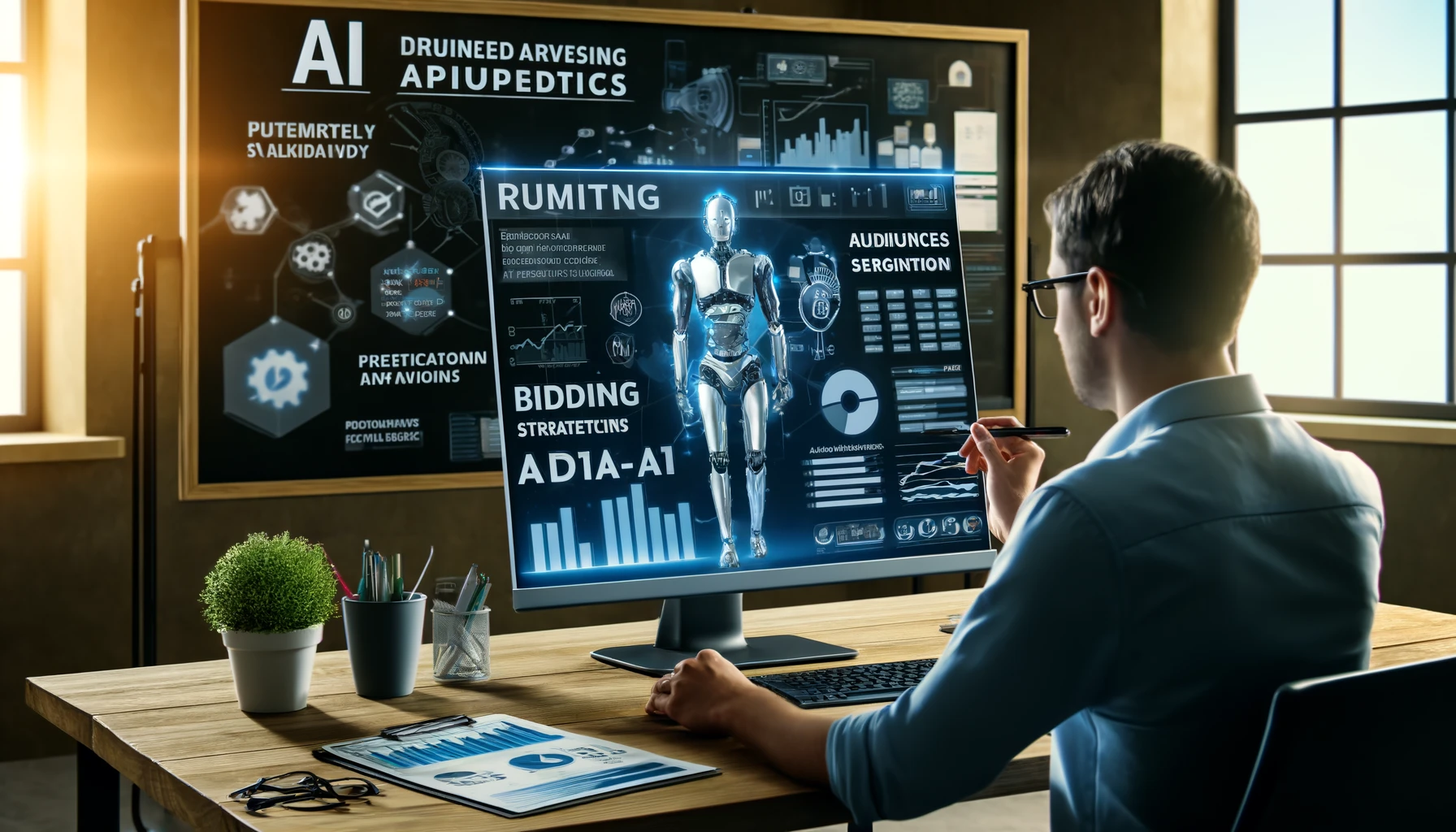📌 Introduction
Managing paid traffic campaigns manually can be time-consuming and inefficient. Fortunately, Artificial Intelligence (AI) and automation have transformed digital advertising by allowing marketers to optimize campaigns, reduce costs, and scale faster.
AI-powered tools help businesses analyze data, predict trends, adjust bidding strategies, and personalize ads automatically. In this guide, you’ll learn how to integrate AI and automation into your paid traffic campaigns to maximize efficiency and profitability.
🎯 Why Use AI and Automation in Paid Ads?
✔ Saves Time – Reduces manual campaign adjustments.
✔ Improves ROI – AI-driven optimization lowers costs and increases conversions.
✔ Enhances Targeting – AI refines audience selection for better performance.
✔ Optimizes Bidding – Automated bidding adjusts in real time to maximize results.
🔎 1. How AI and Automation Work in Paid Advertising
AI and automation improve campaign performance by analyzing vast amounts of data and making real-time optimizations.
✅ Key AI-Powered Advertising Functions:
✔ Automated Bidding – AI adjusts bids based on real-time competition and user behavior.
✔ Dynamic Audience Targeting – AI finds the most likely converters based on past data.
✔ Ad Creative Optimization – AI tests different creatives to determine the best performer.
✔ Predictive Analytics – AI forecasts future trends and user behaviors.
Example: Google Ads’ Smart Bidding automatically adjusts bids to get the most conversions at the lowest possible cost.
🛠 Recommended Tools:
- Google Smart Bidding – AI-driven bid optimization.
- Facebook Advantage+ Audiences – AI-based audience targeting.
- Adzooma & Revealbot – AI-powered ad automation tools.
📊 2. AI-Powered Bidding Strategies for Cost Efficiency
AI can automatically adjust bids based on time of day, user device, competition levels, and conversion probability.
✅ Best AI Bidding Strategies:
| Bidding Strategy | Platform | Use Case |
|---|---|---|
| Target CPA (Cost Per Acquisition) | Google Ads & Facebook Ads | Lowers cost per conversion. |
| Maximize Conversions | Google Ads | Gets the most conversions for your budget. |
| Enhanced CPC (eCPC) | Google & Microsoft Ads | Adjusts bids based on likelihood of conversion. |
| Target ROAS (Return on Ad Spend) | Google Ads | Optimizes for high profitability. |
Example: An e-commerce store using Target ROAS can let AI optimize bids to focus on users who are more likely to purchase higher-value products.
🛠 Recommended Tools:
- Google Ads Automated Rules – Adjusts budgets based on performance.
- Facebook Automated Bidding – AI-powered bidding for Facebook & Instagram Ads.
📢 3. AI for Audience Targeting and Segmentation
AI identifies patterns in user behavior to create more effective audience segments.
✅ How AI Enhances Audience Targeting:
✔ Uses Lookalike Audiences to find similar high-converting users.
✔ Identifies in-market audiences (people actively looking for products).
✔ Refines interest-based targeting for better engagement.
Example: A SaaS company running LinkedIn Ads can use AI to target business decision-makers based on job title, company size, and engagement history.
🛠 Recommended Tools:
- Google Audience Expansion – Finds new potential customers.
- Facebook Lookalike Audiences – AI-powered audience discovery.
📉 4. AI-Powered Ad Creative Optimization
AI tools test different ad variations and select the best-performing creatives automatically.
✅ How AI Improves Ad Creatives:
✔ Uses dynamic ads to personalize content based on user preferences.
✔ Tests multiple versions of headlines, images, and descriptions.
✔ Adjusts ad messaging in real-time for better engagement.
Example: A travel agency using Facebook Dynamic Ads can show personalized hotel recommendations based on past website activity.
🛠 Recommended Tools:
- Google Responsive Search Ads (RSA) – AI optimizes ad copy automatically.
- Facebook Dynamic Creative Optimization – Tests multiple ad elements for best results.
📈 5. AI-Driven Predictive Analytics for Campaign Optimization
Predictive analytics helps forecast trends, adjust ad spend, and identify opportunities before they happen.
✅ AI-Based Predictive Analytics Uses:
✔ Identifies which audience segments will likely convert in the future.
✔ Forecasts seasonal trends to optimize ad budgets.
✔ Detects potential budget waste before it impacts ROI.
Example: An AI-powered system might predict that users who engage with video ads are 3X more likely to convert, prompting marketers to shift budget toward video-based creatives.
🛠 Recommended Tools:
- Google Analytics Predictive Metrics – Forecasts future conversions.
- Hunch AI – Automates ad campaign insights.
🔄 6. Automating Retargeting Campaigns with AI
Retargeting works better when powered by AI-driven automation.
✅ How AI Enhances Retargeting:
✔ Identifies high-intent visitors (e.g., users who viewed pricing pages).
✔ Adjusts ad frequency to avoid ad fatigue.
✔ Creates personalized retargeting ads based on past interactions.
Example: A B2B software company can use AI to retarget users who spent more than 2 minutes on the product page but didn’t sign up.
🛠 Recommended Tools:
- AdRoll AI Retargeting – Automates personalized retargeting campaigns.
- Facebook Automated Retargeting Audiences – AI-powered remarketing.
🚀 Conclusion
AI and automation transform paid traffic campaigns by improving targeting, optimizing ad spend, enhancing creatives, and automating workflows. By integrating AI into your strategy, you can increase efficiency, lower costs, and maximize conversions.
🔥 Key Takeaways
✔ Use AI-powered bidding (Target CPA, ROAS, Maximize Conversions) for efficiency.
✔ Leverage AI audience segmentation to target high-converting users.
✔ Optimize ad creatives with dynamic and responsive ads.
✔ Use predictive analytics to forecast performance and adjust strategies.
✔ Automate retargeting campaigns to bring back lost visitors.
By implementing AI and automation, you’ll improve campaign efficiency, reduce wasted spend, and scale paid traffic campaigns profitably! 🎯
